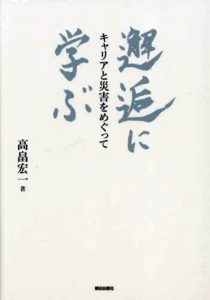Interview with the author “Learning from Encounters: About Careers and Disasters” (by Koichi Takabatake)

高畠宏一氏(Mr. Koichi Takabatake)
Koichi Takabatake’s (Mirait One Advisor) book “Learning from Encounters: About Careers and Disasters” is an autobiography that chronicles Takabatake’s life at NTT. At the same time, it also has the distinctive features of a practical textbook on disaster prevention.
“When I thought about the essence of my work at NTT, I realized that it was about digging deep into communication. When I belong to a group or organization, I grow as a member of that group based on the connections I make. I have come to think that the essence of NTT’s communications business is the work of mediating those connections,” he says.
The book is filled with episodes of encounters with various people.
“I try to proactively meet people I want to meet. Meeting them has a huge impact on me. What I want to tell my juniors is to act voluntarily and meet people you want to meet. You can get a lot out of that,” he said, adding, “NTT’s true essence is to facilitate communication with people you want to meet. If you communicate well, there is only happiness. Conversely, if you don’t communicate well, you become a little unhappy. In recent years, there has been a lot of talk about well-being, and communication contributes to well-being, and this is NTT’s business domain.”
During his time at NTT, Takabatake was a disaster response pro, and played a leading role in restoring communications on many occasions. The book provides a detailed explanation of the disaster response that Takabatake has experienced, based on facts from the field. Such knowledge can also be used in future disaster prevention measures by infrastructure operators.
“I have seen many disasters through my work at NTT, and I truly believe that nature should not be underestimated. Nature must be approached with awe. Humans cannot control nature with their small powers. The key to natural disasters is to first fear, then run away. This is the rule. If you do this, you will not die. If you do not die, you can try again. The most important thing is not to die,” he emphasized.
Takabatake’s sensitivity to disasters is still strong.
During the interview, the frequent heavy rain disasters in Akita were discussed. Akita has been plagued by heavy rain disasters for the past few years.
Takabatake pointed out the causes of this with aplomb, saying, “Akita has not had much heavy rain up until now, so measures like Kyushu have not been taken. Kyushu has made water channels to deal with heavy rain, but without them, heavy rain would come in and cause severe landslides.”

朝日出版社、2200円
He said that he still checks the earthquake situation in Japan and around the world as a daily routine. He is considering the Nankai Trough earthquake, which is said to occur at any time.
“We must assume that an earthquake will occur and take all possible measures. That is the only measure we can take for earthquakes. When an earthquake actually occurs, recovery scenarios will be important, so it is important to create various scenarios and conduct repeated dry runs. Cooperation is also important in infrastructure recovery. Our greatest ally is the Self-Defense Forces, so it is desirable to cooperate closely with them on a daily basis,” he says.
The title of the book was written by Takabatake himself. The cover is pink, and there is a reason for that.
“I went to Tohoku to support recovery efforts after the Great East Japan Earthquake. I arrived there immediately after the disaster, and the damage from the tsunami was so extensive that it felt like we had been bombed. I was extremely shocked. When I returned to Osaka after completing the initial recovery efforts, it was early spring and the cherry blossoms were in bloom. I deliberately made the cover of the book the color of cherry blossoms as a symbol of recovery,” says Takabatake.
※Translating Japanese articles into English with AI
